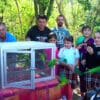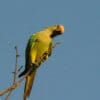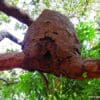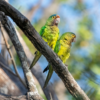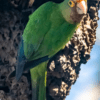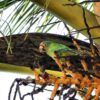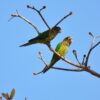Orange-fronted Conure
Also known as:
Orange-fronted Parakeet, Petz's Conure, Half-moon Conure
Also known as:
Orange-fronted Parakeet, Petz's Conure, Half-moon Conure

Eupsittula

canicularis
Size:
24 cm (9.4 in)
Weight:
70-75 g (2.4-2.6 oz)
Subspecies including nominate:
three: E.c. canicularis, E.c. eburnirostrum, E.c. clarae
Colour Adult:
E.c. canicularis: Both adults wide orange frontal band reaching down to lores; dull blue forecrown; pale olive throat and breast. Bill horn colour. Eye ring bare and dull orange/yellow. Eye yellow.
E.c. eburnirostrum: Both adults as in canicularis, but frontal band thinner; brown spot on each side of base of lower mandible.
E.c. clarae: Both adults as in eburnirostrum, but frontal band not as extensive; dark grey at base of lower mandible.
Colour Juvenile:
E.c. canicularis: As in adults, but frontal band narrower. Eye brown.
Call:
Calls made in flight are raucous and screeching. Some notes rapidly repeated. Perched birds give piping whistles and chirruping, and quiet chatter while feeding.
More Information:
WPT-supported project – Stopping Illegal Parrot Trafficking in Mexico
Content Sources:
CITES
Avibase
BirdLife International
Xeno-canto Bird Sounds
Cornell Lab of Ornithology/Birds of the World
Parrots: A Guide to Parrots of the World, Juniper and Parr, 1998
Parrots of the World, Forshaw and Cooper, 1977. 2010 edition
Parrots of the World, Forshaw, 2006.
Parrots in Aviculture, Low, 1992.
Captive Status:
Once were common, now less so.
Longevity:
Up to 30 yrs.
Housing:
Aviary or suspended enclosure, minimum length 2 m (6.5 ft).
Diet:
Fruit such as: apple, pear, orange, cactus fruits, pomegranates, forming about 30 percent of diet; vegetables such as: carrot, celery, green beans, peas in the pod; fresh corn; spray millet; green leaves such as: Swiss chard, lettuce, sowthistle, dandelion; small seed mix such as: canary, millet, and smaller amounts of oats, buckwheat and safflower; soaked and sprouted sunflower seeds; cooked beans and pulses, boiled maize, and complete pellet.
Enrichment:
Socialization, bathing. Provide puzzle toys, foraging toys, unsprayed branches such as fir, willow, elder and pine, bird-safe wood toys, chewable vegetable tanned leather toys, ladders, swings.
Nest Box Size:
Vertical box 10″ x 10″ x 13″ (25.4 cm x 25.4 cm x 33 cm).
Clutch Size:
3-5
Fledging Age:
7 weeks
Hatch Weight:
—
Peak Weight:
—
Weaning Weight:
—
World Population:
500,000-5,000,000 mature individuals; decreasing.
IUCN Red List Status:
Vulnerable
CITES Listing:
Appendix II
Threat Summary:
Is seriously affected by trapping for trade and loss of habitat. Approximately 570,100 individuals were illegally captured from 1995-2019. Assuming that an equal number of individuals is captured every year, the annual illegal take would be about 23,500 individuals.
Range:
E.c. canicularis: Pacific slope of Central America from Chiapas, S Mexico to Honduras and W Costa Rica.
E.c. eburnirostrum: SW Mexico, from eastern Michoacan south to Oaxaca.
E.c. clarae: W Mexico, from Sinaloa south to Colima.
Habitat:
Found up to 1500 m (4920 ft) in lightly wooded country or open areas with scattered trees, arid or semi-arid lowlands, including thorn forest and tropical woodland.
Wild Diet:
Feeds on seeds including Ceiba and Inga, fruits including Ficus, Bursera and Brosimum, and flowers including Gliricidia and Combretum. May take maize and banana.
Ecology and Behaviour:
Forms flocks of 50 or more after breeding season. Established pairs are easily identifiable within these flocks. Birds adapt readily to partially cleared habitats. Communal roosts are with White-fronted Amazons (Amazona albifrons) in some areas.
Clutch and Egg Size:
3-5 rounded eggs, 22.5 x 19.5 mm (0.8 x 0.7 in).
Breeding Season:
January-May El Salvador and Mexico; dry season in Costa Rica. Nest is in arboreal termitarium of Nasutitermes nigriceps, usually excavated by the birds themselves, or sometimes in old woodpecker cavity or natural fissure.
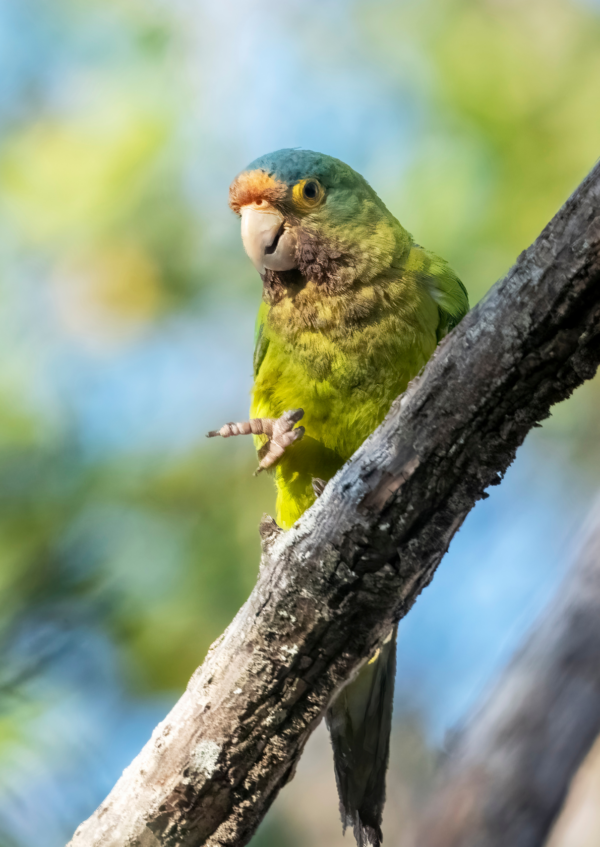
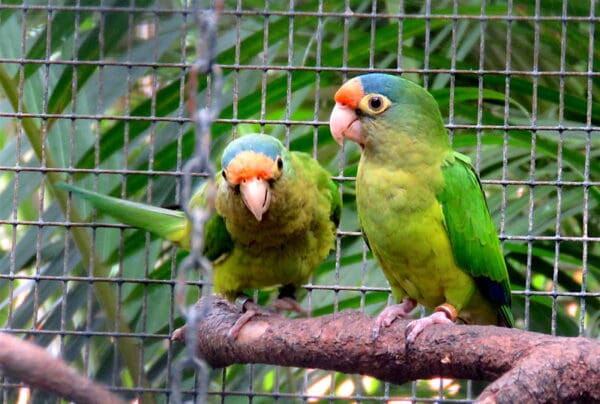
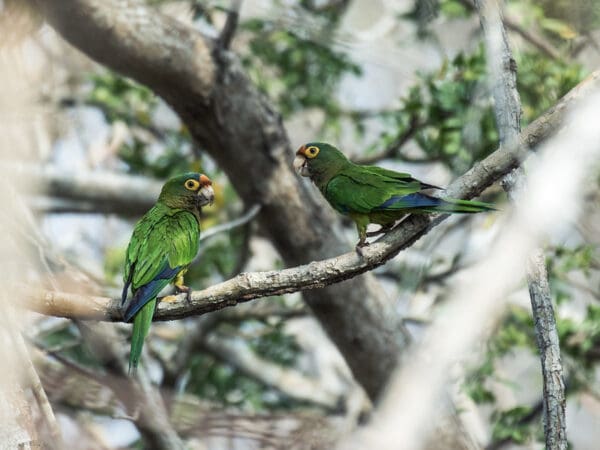
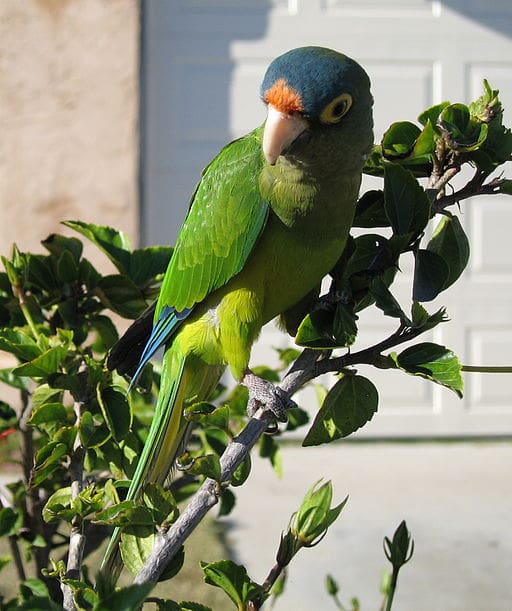
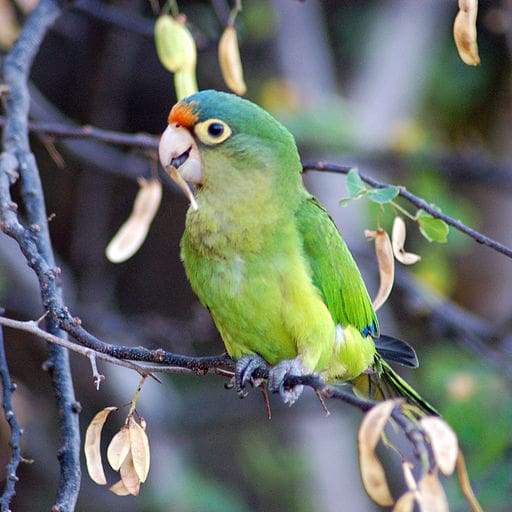
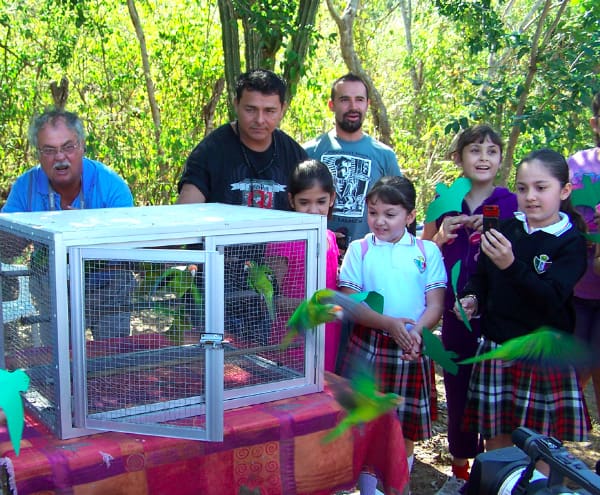
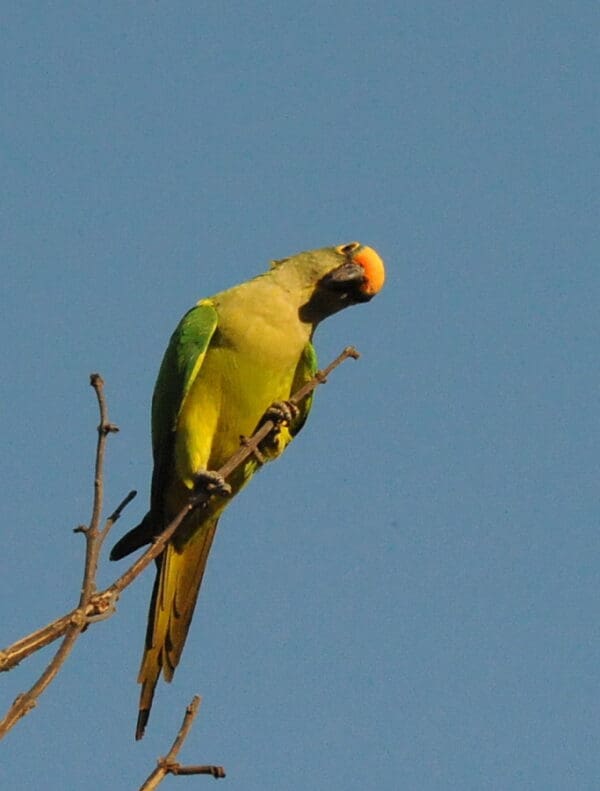
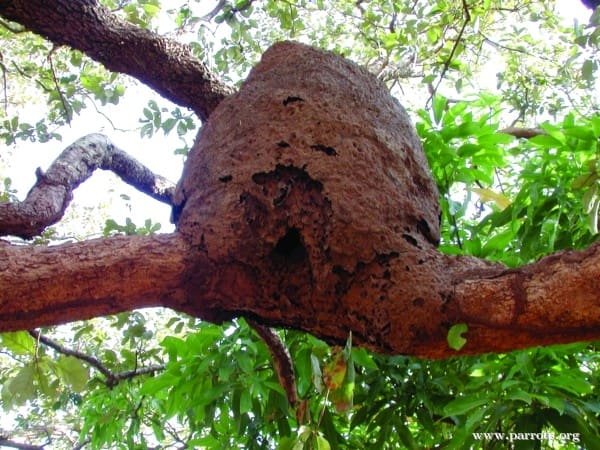
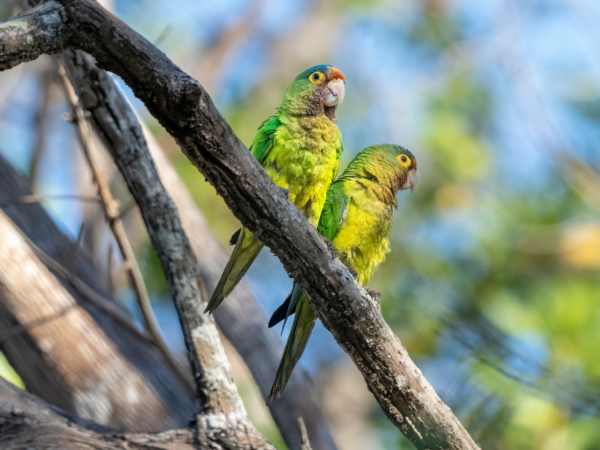
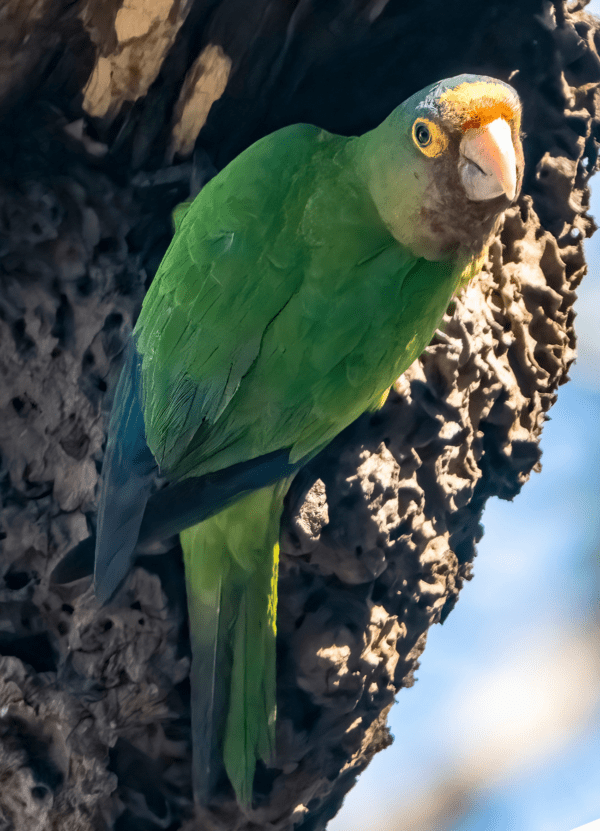
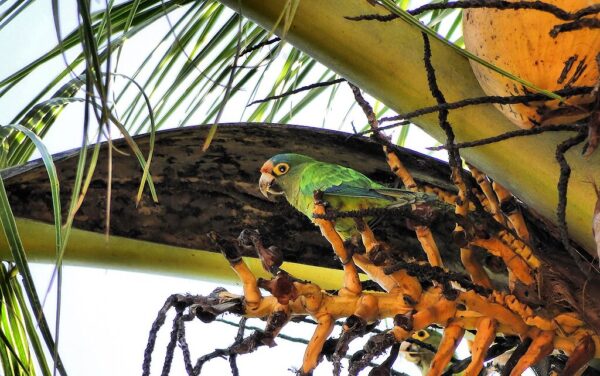
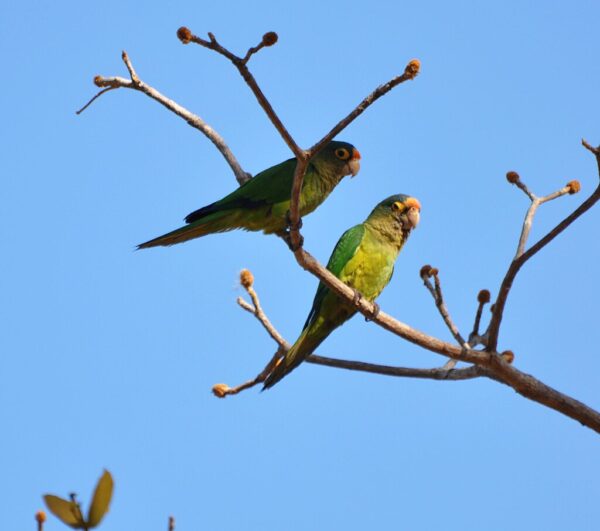
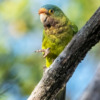
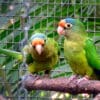
![© Nick Athanas [CC BY-SA 2.0] via Flickr Wild Orange-fronted Conures perch on a branch](https://parrots.org/wp-content/uploads/2023/01/wpt_Orange-fronted-Conure_1324-11-100x100.jpg)
![© derivative work: Snowmanradio (talk) Aratinga_canicularis_-pet-4.jpg: awnisALAN [CC BY 2.0] via Wikimedia Commons A companion Orange-fronted Conure perches on a branch](https://parrots.org/wp-content/uploads/2023/01/wpt_Orange-fronted-Conure_1324-7-100x100.jpg)
![© derivative work: Snowmanradio Charlene Wood [CC BY-SA 3.0] via Wikimedia Commons A wild Orange-fronted Conure feeds on seeds](https://parrots.org/wp-content/uploads/2023/01/wpt_Orange-fronted-Conure_1324-3-100x100.jpg)
